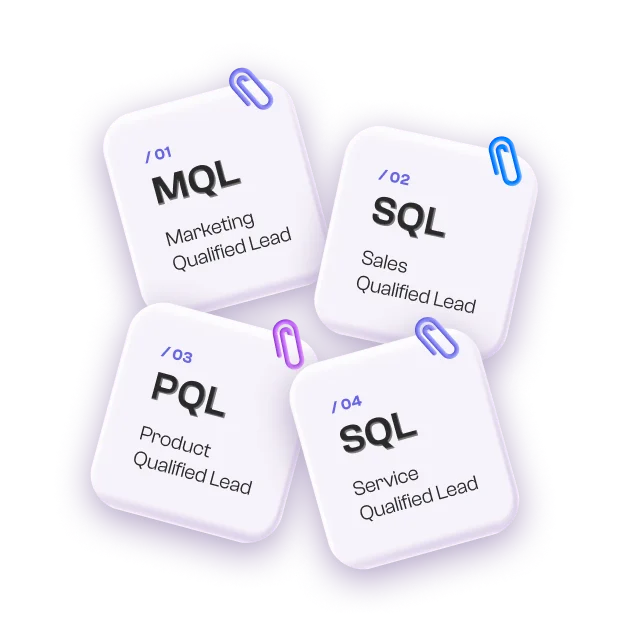Having a high-quality lead list can be a game-changer for any B2B company. A well-curated lead list streamlines the process of connecting with potential clients, driving higher engagement rates, and ultimately boosting sales. However, with various options available for acquiring lead lists, businesses often face a critical decision: should you buy a lead list or build your own?
This decision isn’t just about convenience or cost. It impacts the quality and effectiveness of your outreach efforts. In this article, we’ll delve into what B2B lead lists are, what makes them valuable, and the pros and cons of buying versus building your own. Finally, we’ll provide a comprehensive, step-by-step guide on how to create a high-performing lead list that can elevate your sales strategy.
What is a B2B Lead List?
A B2B lead list is a meticulously compiled collection of potential customers who could benefit from a company’s products or services. These lists are essential tools in the world of business-to-business marketing and sales. Typically, a B2B lead list includes detailed contact information, such as names, email addresses, phone numbers, and sometimes even social media profiles.
Additionally, it contains relevant company data, including industry type, company size, location, and revenue. This wealth of information is crucial for sales teams to identify, connect with, and engage prospects effectively. However, merely having a list of contacts isn’t enough. The quality of these lead lists determines their utility and impact on your sales pipeline. So, what exactly makes a lead list truly effective?
What Makes a Quality B2B Lead List?
Not all lead lists are created equal. A quality B2B lead list isn’t just a random assortment of contacts. It’s a carefully curated database that meets specific criteria to maximize its effectiveness.
- Relevance – The contacts in your lead list should align with your Ideal Customer Profile (ICP) and detailed buyer personas. This means they should represent the types of businesses and decision-makers who are most likely to benefit from and be interested in your offerings. The more closely your leads match your target audience, the higher your chances of successful engagement.
- Accuracy – Accurate information is the backbone of any useful lead list. This includes correct email addresses, phone numbers, job titles, and company details. Inaccurate data leads to wasted effort, increased bounce rates, and potential damage to your sender reputation. Regular validation and verification of data are essential to maintain accuracy.
- Completeness – A good lead list includes all the necessary data points that facilitate effective outreach. This means having comprehensive contact information and additional details that can help personalize your communication. Incomplete data can hinder your ability to craft targeted messages and strategies, reducing the overall effectiveness of your campaigns.
- Freshness – The relevance and accuracy of a lead list can quickly diminish over time. People change jobs, companies move, and businesses evolve. Regular updates are crucial to ensure that your lead list remains current and relevant. A stale lead list can lead to high bounce rates and missed opportunities.
- Segmentation – This allows you to categorize your leads based on various criteria such as industry, company size, geographical location, or buying stage. This enables you to tailor your marketing and sales efforts to specific segments, improving the relevance and effectiveness of your outreach.
- Source – The origin of your lead list matters. Whether you’re buying a list or building your own, understanding where the data comes from and how it was collected is important. Reputable sources ensure that the data is ethically gathered and compliant with data protection regulations.
By focusing on these characteristics, you can ensure that your lead list is not just a collection of names but a powerful tool that drives your sales and marketing efforts forward. Now, let’s explore the debate of buying versus building a lead list, and which approach might be best for your business.
Buying a Lead List vs. Building Your Own: What’s the Better Move?
When it comes to lead generation lists, businesses face a critical decision: to buy or to build. This decision can significantly impact your sales and marketing outcomes. Each approach has its pros and cons, and the best choice depends on your specific needs, goals, and resources. Let’s dive into the details of each option to help you make an informed decision.
Buying a Lead List: Pros and Cons
Buying a lead list can be an attractive option for many businesses, especially those looking for quick results.
Pros
- Speed – One of the most significant advantages of buying a lead list is the speed at which you can acquire a large number of leads. This can be particularly beneficial for businesses looking to kickstart their sales efforts or fill their sales pipeline quickly.
- Convenience – Purchasing a lead list saves considerable time and effort compared to building a list from scratch. Instead of spending weeks or months gathering data, you can immediately access a ready-made list and start your outreach campaigns.
- Scalability – Buying a lead list allows you to scale your reach quickly and efficiently. Reliable providers can offer extensive databases that cover a wide range of industries and geographies, helping you expand your market presence with minimal effort.
Cons
- Quality Issues – One of the primary concerns with purchased lists is the potential for outdated or inaccurate information. Data quality can vary significantly between providers, and there’s always a risk of high bounce rates and low engagement if the data isn’t up-to-date.
- Relevance – The contacts in a purchased list may not perfectly match your Ideal Customer Profile or buyer personas. This can lead to lower conversion rates and wasted resources on outreach efforts that don’t resonate with your target audience.
- Legal Risks – Compliance with data protection regulations such as GDPR can be challenging when using purchased lists. If the data was not collected or processed in compliance with relevant laws, you could face legal repercussions and damage your reputation.
Positives and Negatives of Building Your Own Lead List
Building your own lead list is a more labor-intensive approach, but it offers several significant benefits.
Pros
- Custom Fit – When you build your own lead list, you can tailor it precisely to your target audience. By focusing on your ICP and buyer personas, you ensure that the leads you gather are highly relevant to your business, increasing the likelihood of successful engagements.
- Higher Accuracy – Building your own list allows for regular updates and validation of information. This ensures that your data is accurate and up-to-date, reducing the chances of encountering high bounce rates and improving overall campaign effectiveness.
- Compliance – By gathering data yourself, you can maintain stricter control over compliance with data protection regulations. This minimizes legal risks and helps you build a trustworthy reputation with your prospects.
Cons
- Time-Consuming – One of the most significant drawbacks of building your own lead list is the time it takes. Researching, gathering, and verifying data can be a lengthy process, which may delay your marketing and sales efforts.
- Resource-Intensive – Building a lead list requires dedicated tools, technology, and personnel. This can be resource-intensive, particularly for smaller businesses with limited budgets and manpower.
- Slower Start – Compared to buying a list, building your own list takes longer to reach a comprehensive database of potential leads. This slower start can be a disadvantage if you need to ramp up your sales efforts quickly.
The Verdict
Deciding whether to buy a lead list or build your own depends on your immediate needs, resources, and long-term goals. If you need to quickly fill your sales pipeline and have the budget to invest in a reputable provider, buying a lead list can offer speed and convenience. However, this approach comes with risks related to data quality and compliance.
On the other hand, building your own lead list ensures higher quality, relevance, and adherence to data protection regulations. While this approach is more time-consuming and resource-intensive, it offers sustainable benefits for long-term lead generation. By investing the time and effort to create a tailored, accurate, and compliant lead list, you can enhance your outreach efforts and achieve better results.
For businesses looking for a sustainable and effective lead generation strategy, building your own lead list is often the better move. It provides a custom fit to your target audience, ensures higher data accuracy, and helps maintain compliance with legal standards. Ultimately, the choice between buying and building depends on your specific circumstances, but prioritizing quality and relevance will always lead to better outcomes.
How to Build a Quality B2B Lead List
Creating a high-performing B2B lead list requires a strategic approach that involves multiple steps. By following these steps, you can ensure that your lead list is not only comprehensive but also highly targeted and effective.
1. Get Your Ideal Customer Profile and Buyer Personas Right
Defining your Ideal Customer Profile and buyer personas in detail is the first and most crucial step. Your ICP is a hypothetical description of the type of company that would benefit most from your product or service.
Buyer personas are detailed profiles of your target customers, including their roles, responsibilities, pain points, and decision-making processes. Understanding these aspects ensures that your lead list targets the right people.
- Research – Gather data on your existing customers and analyze trends.
- Surveys and Interviews – Conduct surveys and interviews with current customers to understand their needs and pain points.
- Market Analysis – Study market trends and identify potential customer segments.
- Feedback Loops – Continuously refine your ICP and buyer personas based on feedback from your sales and marketing teams.
2. Define the Decision-Maker Profiles You Want to Target
Once you have your ICP and buyer personas, the next step is to identify the key decision-makers within your target companies. These are the individuals who have the authority to make purchasing decisions. Depending on your product or service, these decision-makers could be CEOs, CTOs, procurement managers, or other senior executives.
- Roles and Titles – Identify the specific job titles that align with your target decision-makers.
- Responsibilities – Understand the responsibilities and pain points associated with these roles.
- Influence – Determine the level of influence these individuals have on purchasing decisions.
3. Establish Key Parameters to Add to Your Lead Lists
To make your lead list actionable, you need to determine the critical data points to include. These parameters will help you filter and segment your leads effectively.
- Contact Information – Email addresses, phone numbers, and social media profiles.
- Company Details – Company size, industry, and annual revenue.
- Job Titles and Roles – Specific roles and titles of the decision-makers.
- Geographic Location – The physical location of the company or decision-makers.
4. Build a Robust Tech Stack to Search, Filter, and Collect Data
Investing in the right tools and technologies is essential to automate and streamline your lead generation process. A robust tech stack will enable you to search, filter, and collect data efficiently.
- LinkedIn Sales Navigator – For finding and connecting with potential leads.
- CRM Systems – To manage and track your interactions with leads.
- Data Enrichment Platforms – To enhance your lead data with additional information.
- Email Marketing Tools – For automated outreach and follow-up campaigns.
5. Create Workflows to Analyze, Validate, and Refresh Your List
Establishing workflows to regularly verify and update your lead list is crucial for maintaining its quality and effectiveness.
- Data Validation – Implement processes to regularly check and validate the accuracy of your data.
- Regular Updates – Schedule periodic reviews to update and refresh your lead list with new information.
- Performance Analysis – Analyze performance metrics to identify areas for improvement and refine your list.
Build a High-Performing Lead List with These Best Practices
To ensure your lead list remains a valuable asset, follow these best practices:
- Regular Updates – Keep your data fresh and relevant with periodic reviews. This prevents outdated information from hindering your outreach efforts and ensures you’re always working with the most accurate data.
- Data Enrichment – Use data enrichment tools to add missing information and enhance the quality of your data. This can include additional contact details, company information, and social media profiles.
- Segmentation – Segment your list based on criteria such as industry, company size, or geography for targeted outreach. Segmentation allows you to tailor your messaging to specific groups, improving the relevance and effectiveness of your campaigns.
- Compliance – Adhere to data protection regulations like GDPR to avoid legal issues. Ensure that your data collection and processing practices are compliant with relevant laws and regulations to maintain trust and credibility.
- Performance Monitoring – Track the effectiveness of your lead list and make adjustments as needed. Use metrics such as open rates, response rates, and conversion rates to evaluate the performance of your lead generation efforts and continuously optimize your strategies.
Conclusion
Building a successful B2B marketing strategy hinges on having a high-quality lead list. Whether you choose to buy or build your own lead list, the decision should align with your immediate needs, resources, and long-term goals. Buying a lead list offers speed and convenience but comes with potential quality and compliance risks. On the other hand, building your own lead list ensures higher accuracy, relevance, and compliance with data protection regulations, albeit being more time-consuming and resource-intensive.
Creating a quality B2B lead list involves a strategic approach that starts with defining your Ideal Customer Profile and buyer personas. Identifying key decision-makers, establishing critical data parameters, and investing in the right tools are essential steps. Furthermore, implementing workflows to analyze, validate, and refresh your list ensures its ongoing effectiveness.
By adhering to best practices such as regular updates, data enrichment, segmentation, compliance, and performance monitoring, you can maintain a valuable and high-performing lead list. Whether bought or built, the focus should always be on the quality, relevance, and continuous improvement of your lead lists.
In summary, a well-crafted lead list is a powerful tool that can drive successful lead generation campaigns. It enhances your ability to connect with the right prospects, increases engagement rates, and ultimately boosts your sales and marketing efforts. By making informed decisions and following strategic steps, you can create a robust lead list that becomes a cornerstone of your B2B marketing and sales strategy, helping you achieve your business objectives and drive growth.




